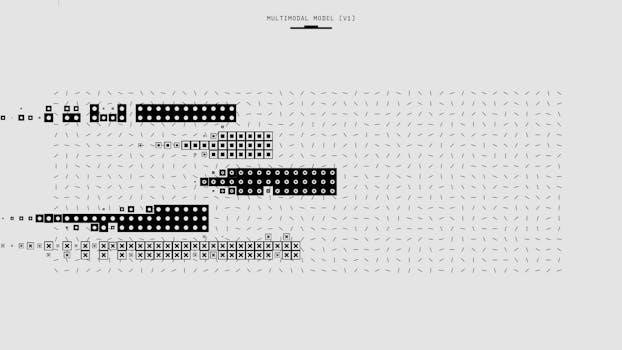
tubigrip size chart pdf
Tubigrip Size Chart⁚ A Comprehensive Guide
Navigating the world of compression bandages requires a clear understanding of sizing. This comprehensive guide aims to demystify the Tubigrip size chart‚ ensuring you select the perfect fit for optimal support and comfort‚ referencing available Tubigrip measuring guides.
Tubigrip is a multi-purpose tubular bandage designed to provide support and compression for various parts of the body. It’s commonly used in the treatment of strains‚ sprains‚ soft tissue injuries‚ and general edema. The bandage offers lasting‚ effective support‚ making it a staple in both medical and home settings. Its elasticated design allows it to conform to the contours of the body‚ ensuring a comfortable fit while maintaining consistent pressure.
One of the key advantages of Tubigrip is its ease of application and reapplication. Unlike traditional bandages that require pins or tape‚ Tubigrip simply slips over the affected area‚ providing instant support. This makes it particularly useful for individuals who need to frequently adjust or remove their bandage. Furthermore‚ Tubigrip is available in a wide range of sizes to accommodate different body parts and individual needs‚ referencing the Tubigrip Size Chart. Selecting the correct size is crucial for achieving the desired level of compression and support‚ enhancing the bandage’s effectiveness and ensuring patient comfort.
What is Tubigrip and its Uses?
Tubigrip is an elasticated tubular bandage that provides tissue support in the treatment of strains‚ sprains‚ soft tissue injuries‚ joint effusions‚ and general edema; Its unique design allows it to conform to the body’s contours‚ distributing pressure evenly across the affected area. Unlike traditional bandages that require pins or tape‚ Tubigrip stays in place on its own‚ offering a secure and comfortable fit. This ease of use makes it a popular choice for both healthcare professionals and individuals managing injuries at home.
The versatility of Tubigrip extends to a wide range of applications; It’s commonly used to support limbs after casts are removed‚ manage post-burn scarring‚ and provide ribcage support. In addition to treating injuries‚ Tubigrip can also be used to provide support during physical activity or to help manage chronic conditions that cause swelling or discomfort. The multi-purpose nature of Tubigrip‚ coupled with its availability in various sizes‚ makes it an essential item in any first-aid kit‚ offering reliable and effective support whenever it’s needed‚ reinforcing the importance of the Tubigrip Size Chart.
Benefits of Using Tubigrip
Tubigrip offers a multitude of benefits‚ making it a superior choice for compression and support. Its primary advantage lies in its ability to provide even pressure distribution‚ minimizing the risk of localized constriction and promoting comfort. Unlike traditional bandages that can loosen or slip‚ Tubigrip stays securely in place‚ ensuring consistent support throughout the day. This eliminates the need for frequent readjustments‚ saving time and effort.
Another key benefit is its ease of application and removal. Tubigrip simply slides over the affected area‚ making it ideal for individuals with limited mobility or those who require frequent bandage changes. The breathable fabric allows for proper ventilation‚ reducing the risk of skin irritation and promoting hygiene. Furthermore‚ Tubigrip is washable and reusable‚ offering a cost-effective and environmentally friendly alternative to disposable bandages. Its availability in a range of sizes‚ guided by the Tubigrip size chart‚ ensures a perfect fit for various body parts‚ maximizing its effectiveness and comfort‚ while supporting strains‚ sprains‚ and edema.

Understanding the Tubigrip Size Chart
The Tubigrip size chart is a crucial tool for selecting the appropriate bandage. Understanding its structure and how to use it correctly ensures optimal support‚ referencing the circumference measurements and corresponding body part applications.
Importance of Accurate Sizing
Accurate sizing when selecting Tubigrip is paramount to achieving the desired therapeutic benefits. An improperly sized bandage can lead to several complications‚ hindering the healing process and causing discomfort. A bandage that is too tight can restrict blood flow‚ leading to swelling‚ pain‚ and potentially more serious circulatory issues. Conversely‚ a bandage that is too loose will fail to provide adequate support‚ rendering it ineffective in managing strains‚ sprains‚ or edema.
Moreover‚ incorrect sizing can compromise the bandage’s ability to stay in place‚ requiring frequent readjustments and potentially delaying recovery. The Tubigrip size chart is designed to mitigate these risks by providing a clear guide based on limb circumference. By carefully measuring and consulting the chart‚ users can ensure a snug‚ comfortable fit that promotes healing without impeding circulation. Accurate sizing ensures the Tubigrip provides consistent‚ even pressure‚ maximizing its therapeutic effect and minimizing the risk of adverse events. Consulting measuring guides is highly recommended.
How to Measure for Tubigrip
To ensure you select the correct Tubigrip size‚ accurate measurement is crucial. The primary measurement needed is the circumference of the affected body part. Use a flexible measuring tape to gently measure around the widest part of the limb where the Tubigrip will be applied. Ensure the tape is snug but not constricting; it should lie flat against the skin without digging in.
For areas like the ankle or wrist‚ measure around the joint itself. For limbs with varying widths‚ such as the calf‚ measure at the broadest point. It’s helpful to have someone assist you‚ especially for areas that are difficult to reach. Record the measurement in centimeters‚ as most Tubigrip size charts use this unit. Once you have the circumference‚ consult the appropriate size chart‚ paying close attention to the ranges provided for each size. If your measurement falls between two sizes‚ it’s generally recommended to choose the larger size to avoid restricting circulation. Remember‚ proper measurement is the foundation for effective Tubigrip use;
Tubigrip Size Chart⁚ Circumference and Applications
The Tubigrip size chart is organized by circumference‚ indicating the range of limb sizes each Tubigrip size can accommodate. Sizes typically range from A‚ designed for infant limbs with circumferences around 10-13 cm‚ up to larger sizes like L‚ suitable for larger adults. Each size corresponds to a specific range; for example‚ size B might fit circumferences of 13-16 cm‚ ideal for small hands‚ arms‚ or wrists.
The chart also suggests appropriate applications for each size. Size C‚ covering 16-20 cm‚ is often used for medium wrists and ankles‚ or small elbows. Size D (20-24cm) is commonly applied for larger wrists‚ medium ankles and elbows‚ or even small knees. Selecting the right size ensures effective support and compression without restricting circulation. Always refer to a detailed size chart for precise measurements and recommended uses‚ as variations may exist between manufacturers. Utilizing the chart correctly optimizes the therapeutic benefits of Tubigrip for various conditions.
Size Chart for Different Body Parts
Tubigrip sizing varies depending on the body part requiring support. A comprehensive size chart addresses these differences. For infant feet or arms‚ size A (10-13 cm) is typically recommended. Small hands‚ arms‚ and wrists often require size B (13-16 cm). Moving up‚ medium arms‚ wrists‚ and small ankles might use size C (16-20 cm). Large wrists‚ medium ankles and elbows‚ or small knees often benefit from size D (20-24 cm).
For larger areas like medium knees or small thighs‚ size E (24-28 cm) may be appropriate. Calf applications often use size D‚ with a circumference fitting 26-40cm. Accurate measurement of the body part is crucial before consulting the size chart. Remember to measure the widest part of the limb to ensure a proper fit. Using the correct size ensures effective compression and support‚ optimizing the bandage’s therapeutic benefits for specific body areas.

Applications and Sizing Examples
Understanding Tubigrip’s versatility requires exploring specific applications. From arms and wrists to ankles and legs‚ appropriate sizing is paramount. Examples showcase how to accurately select the correct Tubigrip size based on individual needs and limb circumference.
Tubigrip for Arms and Wrists
When utilizing Tubigrip for arm and wrist support‚ precise sizing is crucial for effective compression and comfort. For infants needing arm support‚ size A‚ accommodating a circumference of 10-13cm‚ is generally recommended. Smaller hands and wrists often benefit from size B (13-16cm)‚ while medium arms and wrists may require size C (16-20cm). Larger arms could necessitate size D (20-24cm).
To ensure accurate sizing‚ measure the circumference of the arm or wrist at its widest point. Consult the Tubigrip size chart to correlate your measurement with the appropriate size. Remember that too-tight Tubigrip can restrict circulation‚ while a loose fit may not provide adequate support. Proper application involves double-layering the bandage for optimal compression‚ as indicated by alternative sizing methods for 10-15 mm Hg compression.
Consider consulting a healthcare professional for personalized sizing advice‚ particularly when dealing with specific injuries or conditions. Remember to refer to the Tubigrip measuring guide for clarity.
Tubigrip for Ankles and Elbows
Selecting the correct Tubigrip size for ankles and elbows is paramount for effective support and injury management. For small ankles or elbows‚ a size C Tubigrip (16-20cm) is often appropriate. Medium-sized ankles and elbows typically require a size D (20-24cm). It’s vital to measure the circumference of the joint at its widest point to ensure accurate sizing. Applying the correct size ensures targeted compression‚ aiding in reducing swelling and providing stability.

When measuring‚ ensure the limb is in a relaxed‚ neutral position. Refer to a Tubigrip size chart‚ readily available online or as a PDF‚ to match your measurement to the corresponding size. Proper application involves pulling the Tubigrip over the joint‚ ensuring it’s evenly distributed without excessive tightness. A properly sized Tubigrip should provide firm support without restricting circulation.
If unsure‚ consult with a healthcare professional for personalized guidance. Always prioritize comfort and proper circulation. Remember‚ the goal is to provide support and facilitate healing‚ and correct sizing is the foundation for achieving these outcomes. Consider the Tubigrip tape measuring guide for extra help.
Tubigrip for Legs (Calf Circumference)
Accurate sizing is crucial when using Tubigrip for leg support‚ particularly concerning calf circumference. The appropriate Tubigrip size directly impacts effectiveness in managing conditions like edema‚ strains‚ or post-burn scarring. To determine the correct size‚ measure the widest part of the calf with the leg relaxed. This measurement should then be compared to a Tubigrip size chart‚ often accessible in PDF format online.
For calf circumferences between 26.0 and 40.0 cm‚ a size D Tubigrip is frequently recommended; however‚ always consult the specific size chart provided by the manufacturer. It’s important to note that some individuals may require a larger size depending on the degree of swelling or the presence of dressings. The Tubigrip should fit snugly‚ providing even compression without restricting circulation or causing discomfort.
When applying‚ ensure the Tubigrip is smooth and wrinkle-free. If using a double layer for increased compression (10-15 mm Hg)‚ consider the alternate sizing method outlined in measuring guides. Selecting the right Tubigrip size for your calf circumference is key to achieving optimal support‚ promoting healing‚ and preventing complications. Always prioritize comfort and monitor for any signs of restricted circulation.

Where to Find Tubigrip Size Charts
Finding the correct Tubigrip size chart is essential. Many resources offer these charts‚ including online retailers‚ medical supply websites‚ and manufacturers. Look for downloadable PDFs for easy access and printing for accurate measurement comparisons.
Online Resources and PDFs
Locating Tubigrip size charts is straightforward thanks to numerous online resources. Official manufacturer websites‚ such as Mölnlycke‚ often provide comprehensive sizing guides and application instructions. These resources frequently include printable PDF versions of the size chart‚ ensuring accurate measurements can be taken at home or in a clinical setting.
Reputable medical supply retailers also host size charts on their product pages. These charts are usually tailored to specific Tubigrip products and include details on circumference ranges for various body parts. When browsing online‚ ensure the size chart aligns with the specific Tubigrip product you intend to purchase.
Searching for “Tubigrip size chart PDF” on search engines like Google or Bing can also yield a variety of results. Be cautious and verify the source’s credibility before relying on a downloaded chart. Look for charts from established medical websites or official manufacturers to guarantee accuracy. These readily accessible resources and PDFs make finding the right size easier.
Related posts:
Archives
Calendar
| M | T | W | T | F | S | S |
|---|---|---|---|---|---|---|
| 1 | 2 | 3 | 4 | 5 | 6 | 7 |
| 8 | 9 | 10 | 11 | 12 | 13 | 14 |
| 15 | 16 | 17 | 18 | 19 | 20 | 21 |
| 22 | 23 | 24 | 25 | 26 | 27 | 28 |
| 29 | 30 | 31 | ||||
Leave a Reply
You must be logged in to post a comment.